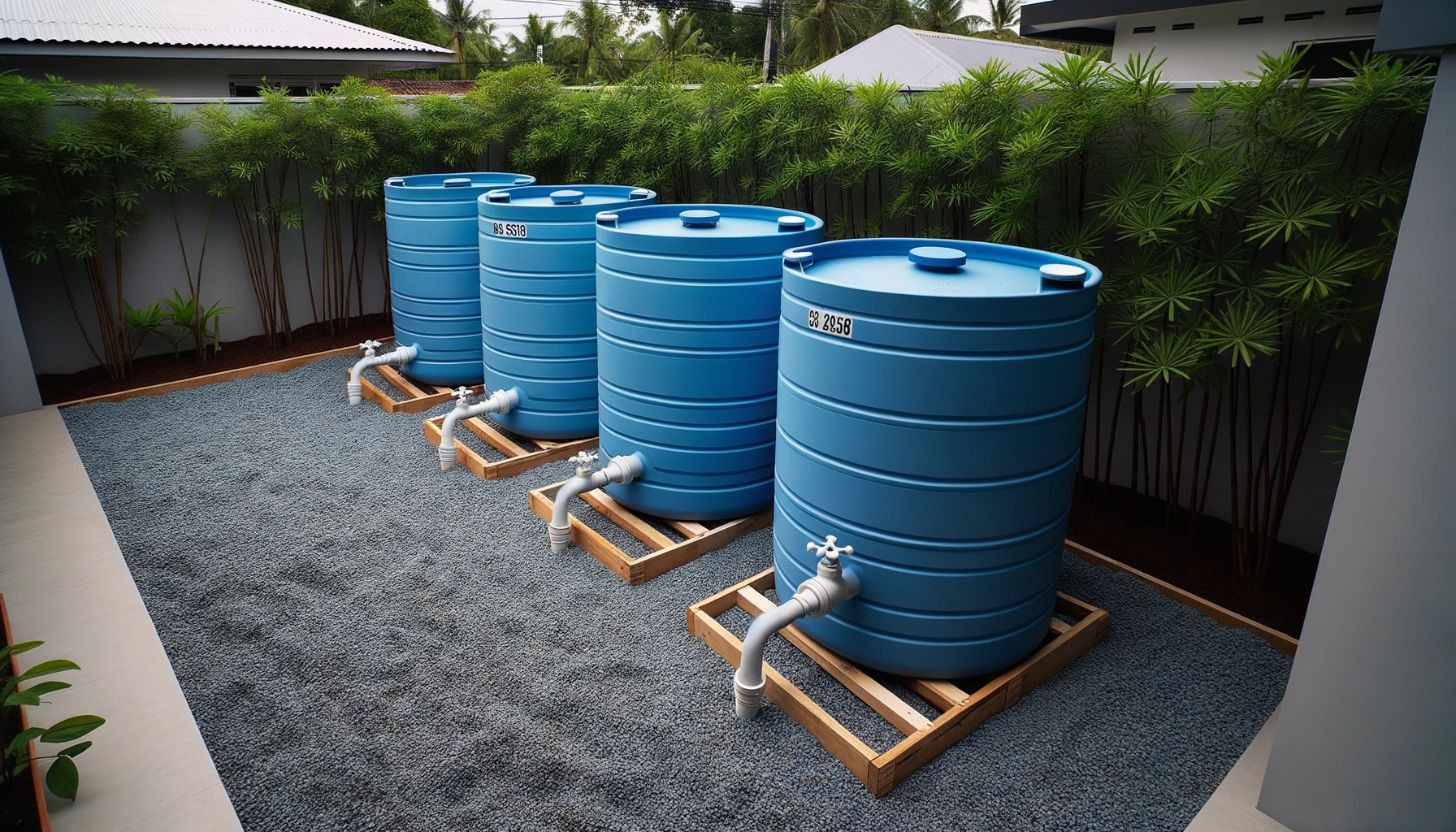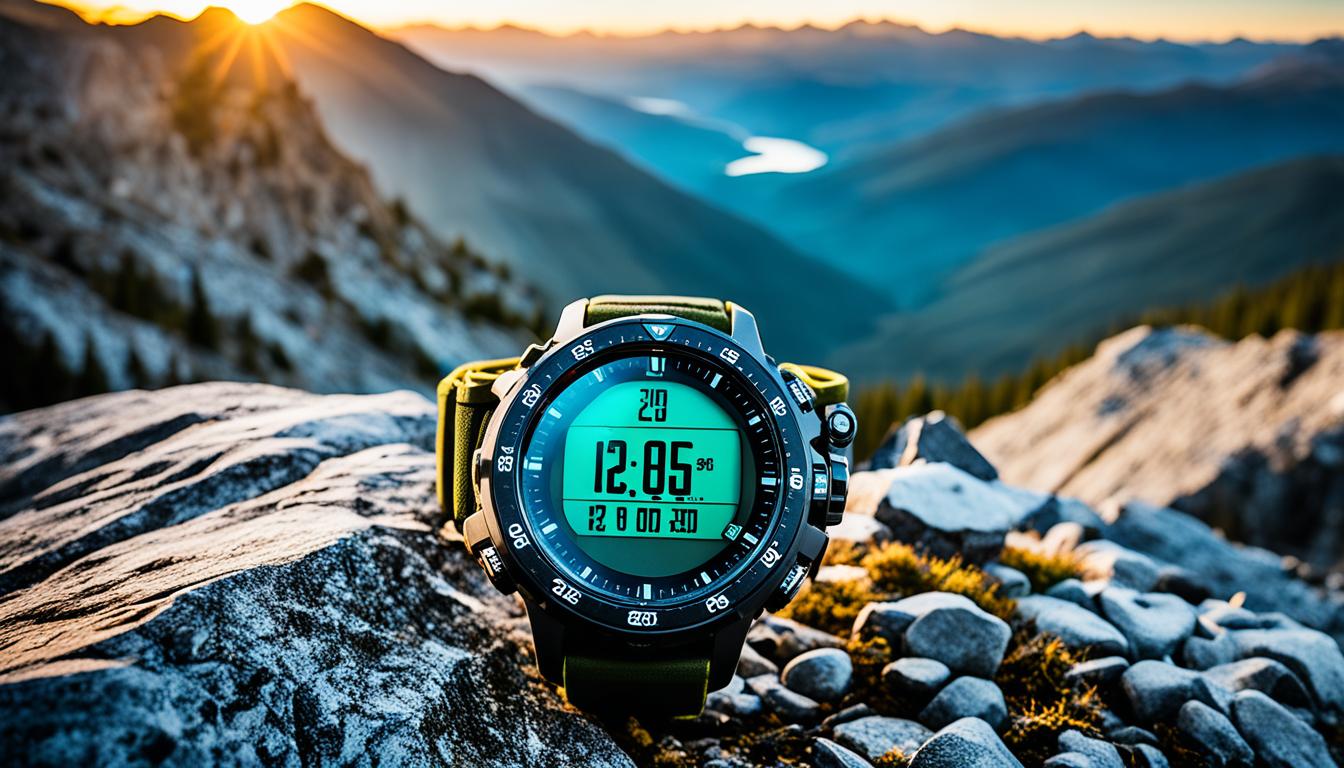When it comes to ensuring that you have access to clean and safe drinking water, proper storage is essential. Safe water storage not only protects against contamination but also ensures that water is readily available during emergencies or periods of drought. In this guide, we will explore effective water storage solutions and techniques to help you ensure that you have a dependable supply of clean water for your home.
Key Takeaways
- Safe water storage is crucial for maintaining the health and well-being of your family.
- Choosing the right water storage container is essential for ensuring clean and safe water.
- Long-term water storage methods such as water tanks and cisterns are effective and reliable.
- Proper storage techniques and guidelines help prevent contamination and ensure freshness.
- Water filtration and purification methods are crucial for maintaining clean and safe water.
Understanding the Importance of Safe Water Storage
Safe water storage is crucial for protecting the health and well-being of your family. Contaminated water can transmit various harmful bacteria, viruses, and parasites, leading to serious illnesses such as diarrhea, cholera, and typhoid fever. By ensuring proper water storage techniques, you can reduce the risk of waterborne diseases and provide clean and reliable water for drinking, cooking, and other purposes.
One of the most significant reasons for safe water storage is to prepare for emergency situations such as natural disasters, power outages, and other unexpected events. Having a sufficient supply of stored water can make a critical difference in ensuring your family’s survival and minimizing the impact of a crisis.
Disclosure: When you buy through links on our site, we may earn an affiliate commission.
The Risks of Contaminated Water
Unsafe water storage can lead to various hazards, including:
- Presence of harmful pathogens such as E. coli, Salmonella, and Cryptosporidium
- Formation of algae, mold, and other contaminants that affect the taste and odor of water
- Leaching of chemicals from improper storage containers, posing health risks
- Exposure to insects, rodents, and other animals that can contaminate stored water
It is essential to understand the potential risks of contaminated water and take steps to ensure the safety of your water supply.
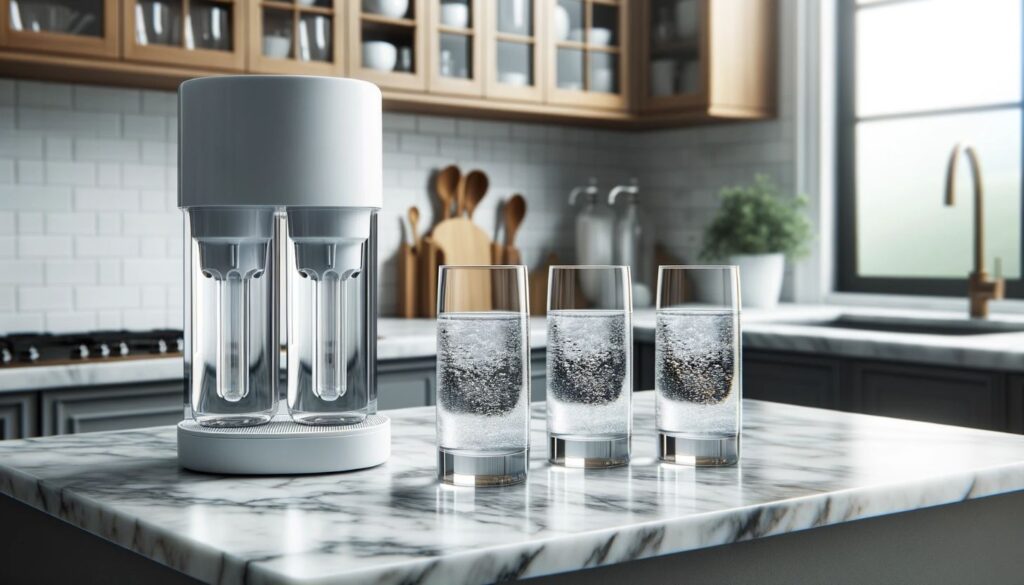
“Having a sufficient supply of stored water can make a critical difference in ensuring your family’s survival and minimizing the impact of a crisis.”
Choosing the Right Water Storage Container
When it comes to selecting a water storage container, it’s essential to choose one that is safe and reliable. With so many options available, it can be challenging to determine the best one for your needs.
First and foremost, your water storage container should be made from food-grade, BPA-free materials to ensure the water remains safe for consumption. Look for containers that are specifically designed for long-term water storage.
When it comes to size, consider the amount of water you need to store and the available storage space. Large water storage containers, such as water barrels or tanks, are ideal for long-term storage and can hold several hundred gallons of water. However, if you have limited space or are looking for a more portable option, collapsible water containers or water storage bags may be a better fit.
| Pros | Cons |
|---|---|
| Large capacity | May not be suitable for small spaces |
| Durable and long-lasting | May be more expensive |
| Secure and airtight | May be challenging to move or transport |
Consider the container’s durability, security, and ease of use. Look for containers that are airtight and secure to prevent any contamination or leaks. Additionally, make sure the container is easy to move and transport if necessary.
Overall, choosing the right water storage container is essential for maintaining the safety and quality of stored water. Take the time to research and select a container that meets your needs and provides dependable, safe storage solutions.
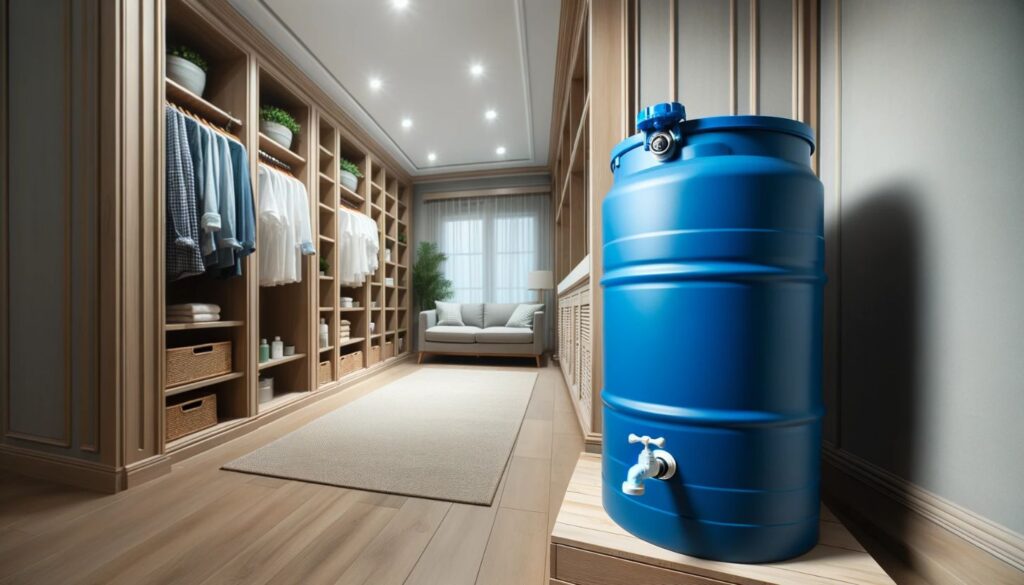
Best Water Storage Methods for Long-Term Storage
When it comes to long-term water storage, there are various methods available that can ensure secure and dependable water supply. Here are some of the best water storage methods you can consider:
Water Barrels
Water barrels are an economical and easy-to-use water storage solution. You can store water in multiple barrels to increase your capacity, and they can be conveniently stored in your basement or garage. Make sure to choose a food-grade barrel and clean it thoroughly before storing water. You can use a siphon pump to access the water when needed. To enhance security, consider storing the barrels behind a locked door or in a fenced area.
Water Tanks
Water tanks are a more substantial option for long-term water storage. They come in various sizes and materials, including plastic, metal, and concrete. Consider how much water you need to store before choosing the appropriate size. You can either bury the tank underground or place it above ground. Proper installation and maintenance are crucial to ensure the tanks remain secure and functional.
Underground Cisterns
Underground cisterns are a great option if you have limited outdoor space. They are installed beneath the ground and can store a massive amount of water. You’ll need to hire a professional to install and maintain an underground cistern. It’s essential to ensure the cistern is adequately sealed and protected from any contaminants.
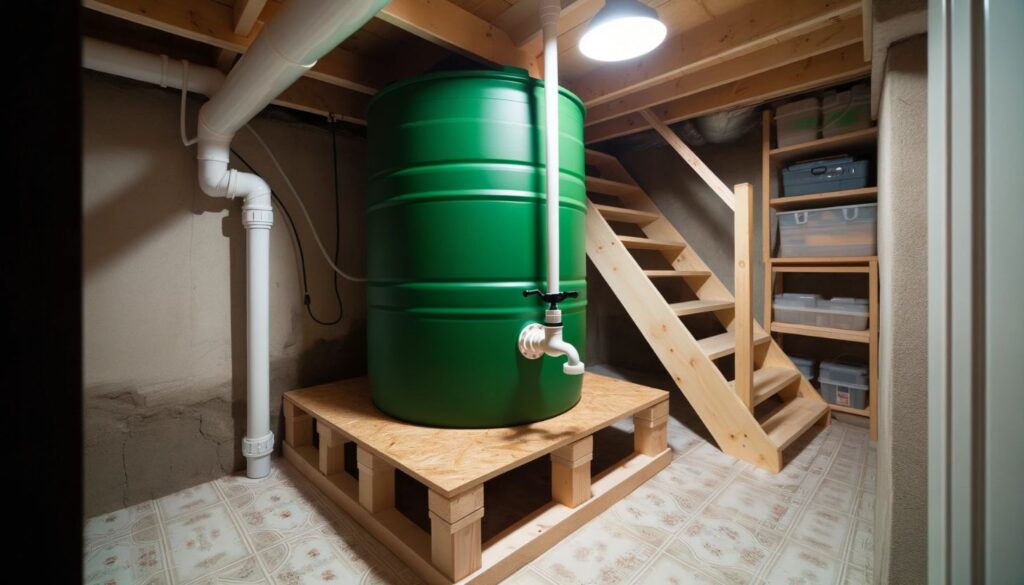
Regardless of the method you choose, make sure to label your water storage containers with the date of storage and the purification method used. Regularly check and rotate your stored water to avoid stagnant water and keep it fresh. By implementing these best water storage methods, you can ensure a secure and sustainable water supply for your household.
Proper Water Storage Techniques for Emergency Preparedness
In emergency situations, access to clean water is critical. You must have a sufficient supply of safe water to last for at least three days for each member of your household. Here are some effective water storage techniques for emergency preparedness:
Portable Water Containers
Portable water containers are an excellent option for emergency situations. They’re easy to transport and come in a variety of sizes, from small bottles to large containers. Make sure to choose BPA-free, food-grade containers and store them in a cool, dark place to prevent the growth of bacteria and algae.
Purification Methods
Water purification tablets and drops are easy to use and can effectively kill harmful bacteria and viruses. Filtration systems, such as straws and pumps, are also a reliable way to remove contaminants from water. These methods are perfect for when you’re on the go, and access to clean water is limited.
Regular Rotations
It’s important to regularly rotate stored water to keep it fresh. Water stored in containers should be replaced every six months. If you’re using tap water, make sure to treat it with purification tablets or drops before storing it.
Implementing these water storage techniques can help ensure that your family has access to clean and safe water during emergency situations. Make sure to keep your water storage containers and systems properly maintained to ensure their longevity and effectiveness.
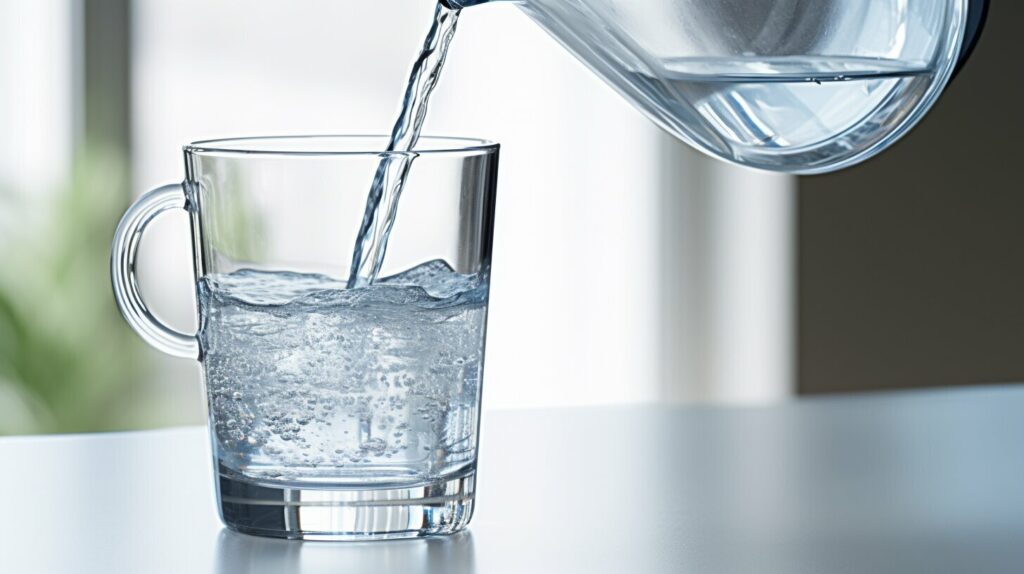
Essential Guidelines for Safe Water Storage
To maintain clean and safe water for your household, it is crucial to follow specific guidelines for proper water storage. Here are some essential guidelines to keep in mind:
- Start with a clean container: Before storing water, make sure the container is clean and free of any contaminants. Wash it thoroughly with soap and water, and sanitize it with a diluted bleach solution (1 teaspoon of bleach per gallon of water).
- Use food-grade containers: To ensure safe storage, only use containers labeled as food-grade or made from materials approved for drinking water. Avoid using containers made from materials like plastic jugs or milk cartons, which can contain harmful chemicals like BPA.
- Store water in a cool, dark place: To prevent bacteria growth, store your water container in a cool, dry place away from sunlight and heat sources.
- Rotate stored water: Over time, stored water can develop a stale taste and odor. To maintain freshness, replace your stored water every six months. This also prevents the growth of harmful bacteria.
- Avoid contamination: Make sure to keep your storage container tightly sealed and avoid touching the inside of the container or the water with your hands.
- Use stored water for non-drinking purposes: In the event of an emergency, stored water should be prioritized for drinking. Use alternative sources of water, such as rainwater or untreated sources, for non-drinking purposes like washing dishes or flushing toilets.
- Dispose of contaminated water: If you suspect that your stored water has been contaminated, do not drink it. Instead, dispose of it properly and sanitize your storage container before refilling it with fresh water.
By following these guidelines, you can ensure that your stored water remains safe and free of contaminants for your family’s use.
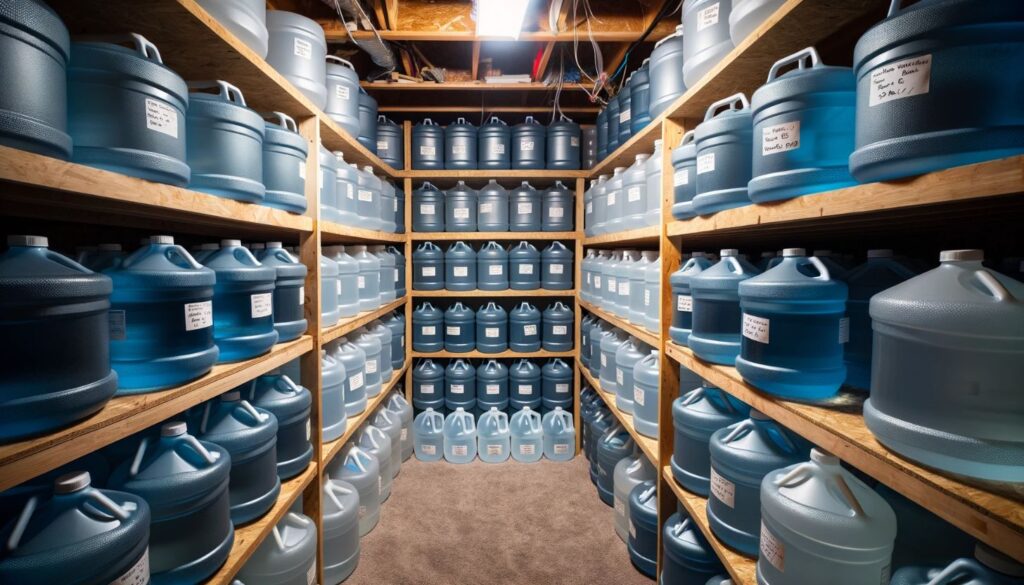
Effective Water Storage Solutions for Small Spaces
When space is at a premium, finding effective water storage solutions can be a challenge. Fortunately, there are plenty of compact options available that can help you store enough water for emergency situations without taking up too much room in your home.
Water Storage Bags: These lightweight, flexible bags are made from durable materials that can be easily stored when not in use. They come in different sizes and can hold up to several gallons of water.
Collapsible Containers: Similar to water storage bags, collapsible containers are made from food-grade materials and can be easily folded down after use. They come in a variety of shapes and sizes, and some are even designed to fit in a backpack or camping gear.
Space-Saving Filtration Systems: If you’re short on space but still want to ensure clean and safe drinking water, consider investing in a compact filtration system. These systems use advanced filtration techniques to remove impurities and contaminants from stored water, and they can be easily stored in a small cupboard or under a sink.
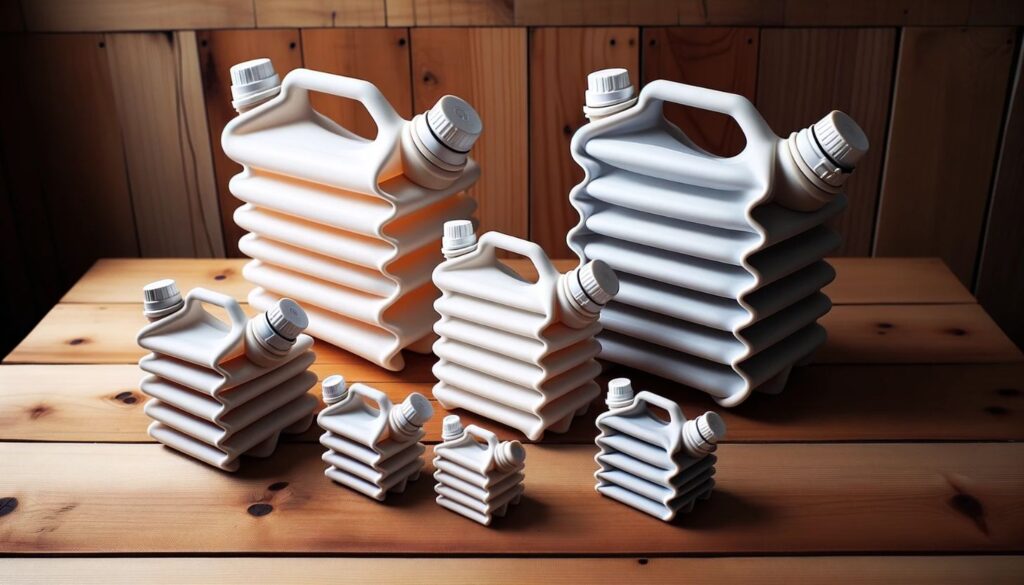
When it comes to choosing a compact water storage solution, be sure to consider your specific needs and the types of emergencies you’re likely to face. You may also want to rotate your stored water regularly to ensure its freshness and quality over time.
Ensuring Clean Water: Filtration and Purification Methods
When it comes to water storage solutions, it is crucial to ensure that the water remains clean and safe for consumption. Even with the most reliable water storage container and storage techniques, water quality can degrade over time, especially in emergency situations. That’s why it is essential to have reliable filtration and purification methods in place.
Water Filtration: A water filter removes impurities and contaminants from water, making it safe for drinking and other uses. There are several types of filters available, ranging from basic carbon filters to more advanced reverse osmosis systems. When selecting a filter, look for one that is appropriate for the level of contamination in your area, and remember to replace the filter regularly according to the manufacturer’s instructions.
Water Purification: Water purification goes one step further than filtration, eliminating bacteria, viruses, and other harmful microorganisms that may be present in the water. One common method of water purification is through the use of purification tablets or drops. These tablets typically contain chlorine, which effectively kills harmful microorganisms. Another popular method is ultraviolet (UV) sterilization, where UV light is used to destroy bacteria and viruses.
It is essential to have reliable filtration and purification methods in place to ensure the safety and quality of stored water. Consider investing in a reliable water filter or purifier that suits your specific needs. Always follow the manufacturer’s instructions for maintenance and replacement to ensure optimal performance.
“Safe water storage is more than just having a container and storing water. It’s about ensuring that the water is clean, safe, and dependable. Filtration and purification methods are essential components of any water storage system, whether for long-term storage or emergency preparedness.”
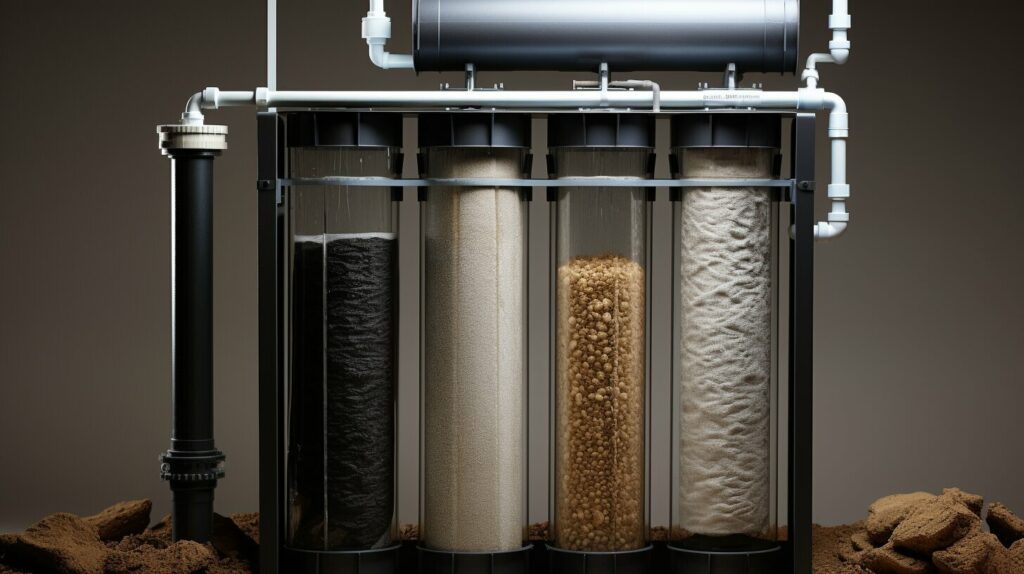
Maintenance and Inspection of Water Storage Systems
Regular maintenance and inspection of your water storage system is essential to ensure that the stored water remains clean and safe for consumption. Proper maintenance and inspection will also extend the life of your storage system, saving you money in the long run.
Firstly, it is important to clean your water storage container at least once a year, or more frequently if necessary. To clean your container, drain all the water and use warm water and soap to scrub the inside. Rinse thoroughly and allow it to dry before refilling.
It is also crucial to disinfect your container every six months to kill any remaining bacteria. Prepare a solution of one teaspoon of bleach per gallon of water and pour it into the container. Fill the container with water and allow it to sit for 24 hours. Drain the water and rinse the container thoroughly before refilling.
Regularly check for any signs of wear or damage to your storage system. Look for cracks or leaks and ensure that the container lid is tightly sealed. If you notice any damage, repair or replace the container immediately.
When refilling your container, ensure that the water source is clean and free from any potential contaminants. Use a portable water filter or purification tablets if necessary to further ensure the cleanliness of your stored water.
By following these maintenance and inspection guidelines, you can ensure that your water storage system remains effective and dependable for both short-term and long-term storage.
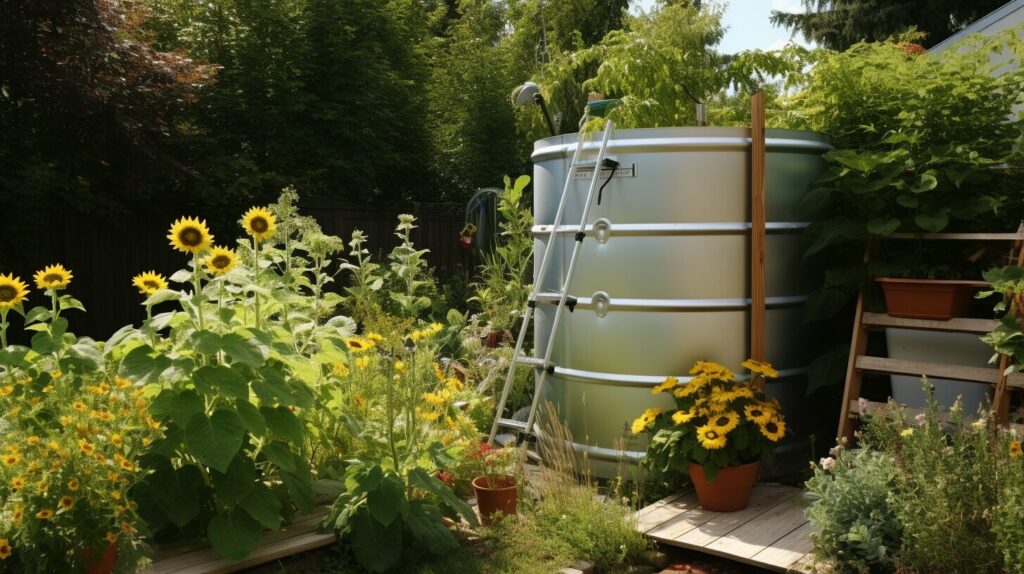
Conclusion
You’ve now learned about the importance of safe water storage and various methods to ensure clean and dependable water for your home. Remember to choose the right water storage container, such as those made from food-grade, BPA-free materials, and explore the best water storage methods for long-term storage, including water barrels, water tanks, and underground cisterns.
For emergency preparedness, consider portable water containers, purification methods, and regularly rotating stored water to maintain freshness. Follow essential guidelines for safe water storage, including maintaining cleanliness, preventing contamination, and ensuring proper storage conditions to avoid health risks.
If you have limited space, explore compact options such as water storage bags, collapsible containers, and space-saving filtration systems. To ensure clean water, consider filtration and purification methods such as different types of filters, purification tablets, and UV sterilization techniques.
Finally, don’t forget about the importance of regular maintenance and inspection of water storage systems. Regular cleaning, disinfecting, and checking for wear or damage will ensure the longevity and effectiveness of your storage system. By implementing these methods and guidelines, you’ll prioritize your family’s health and ensure safe water storage for years to come.
FAQ
What is safe water storage?
Safe water storage refers to the practice of storing water in a way that ensures its cleanliness and dependability for future use.
Why is safe water storage important?
Safe water storage is crucial for maintaining the health and well-being of your family. It helps prevent contamination and ensures access to clean water, especially during emergencies.
What should I consider when choosing a water storage container?
When selecting a water storage container, consider features such as material (should be food-grade and BPA-free), capacity, durability, and ease of use.
What are the best methods for long-term water storage?
The best methods for long-term water storage include using water barrels, water tanks, and underground cisterns. These options offer durability and security for storing larger amounts of water.
What are the proper water storage techniques for emergency preparedness?
For emergency preparedness, use portable water containers, practice water purification methods, and regularly rotate stored water to maintain its freshness.
What are the essential guidelines for safe water storage?
The essential guidelines for safe water storage include keeping the storage container clean, preventing contamination, and ensuring proper storage conditions, such as protecting it from direct sunlight and extreme temperatures.
What are some effective water storage solutions for small spaces?
Effective water storage solutions for small spaces include water storage bags, collapsible containers, and space-saving filtration systems.
How can I ensure clean water from stored water?
To ensure clean water, use filtration methods such as filters, purification tablets, and UV sterilization techniques to remove impurities and pathogens from stored water.
How should I maintain and inspect my water storage system?
Regular maintenance and inspection of your water storage system are important. Clean and disinfect the container, check for any signs of wear or damage, and ensure that the system is functioning properly.
What is the importance of safe water storage?
Safe water storage is crucial for ensuring access to clean and dependable water, especially during emergencies or times of water scarcity. It helps protect the health and well-being of your family.

